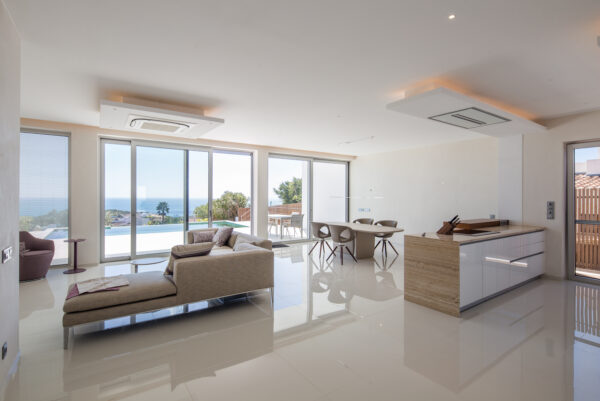Sometimes when we say sustainable, we can see the light fade in people’s eyes; they’re picturing tree-hugging, non-hair-washing hippies ready to dive in front of a bulldozer to save a tree. Now, while literal tree huggers have all our respect, we choose to go about helping the planet in… shall we say… safer, cleaner ways. Ones that end up being beneficial to both us and our world. Today we wanted to explore the subject of sustainability, focussing on how we can make more of an impact while also benefitting from our planet-friendly decisions (without having to drag ourselves out to rallies or face bulldozers bearing down on us, which all sounds like what we want to hear – right?).
How, you may be asking? Let’s get into it:
The Benefits of Sustainable Architecture (for those who aren’t convinced)
We feel like we should start by saying that sustainable architecture does not mean living off the grid in a wooden hut with no running water. In fact, we find people are often surprised by just how clean, modern, technical and technological sustainable architecture can be!
Why?
-
Improved comfort
Because building sustainably requires a lot of thought and planning – often more than “normal” designs – as we seek to work with and within a house’s surroundings. [There you go again, picturing yourself living in a cave or tree roots creeping through your walls – are we right? But that’s not it at all – remember we said clean and modern!]
What we do is we carry out surveys to measure the sun and wind exposure, working from the results to determine the best placement for a house, its windows, terraces, pools and the like. This makes sure they’re aligned with their surroundings and work with nature to give you the most comfortable living experience – sunlight in the right quantities at the right times of day, the right balance of light and shade and heating so that everything is balanced absolutely effortlessly. Starting to see the perks?

-
Reduced costs
Then there’s energy efficiency, which is partly provided by the careful positioning mentioned above and partly by the quality of materials used (better insulators, for example). This means that not only is the amount of energy used by your house reduced (which is great for the planet), but your monthly bills are also brought right down, benefitting everyone!
-
Boosted innovation
And in addition to less power having to be used to heat and cool a house, any energy required can easily be provided by renewable tech. Yes, this is where the innovation comes in – new technologies used to generate more power from the sun and wind, leading to any power that does need to be used being produced for free and sustainably. We did say the benefits were for both you and the planet, didn’t we?
-
Reduced carbon footprint
In the Covid-19 era, the idea of supporting local businesses has taken on a whole new dimension and gained attention like never before. Now, more than ever, we’re focused on those around us and helping them keep their businesses going. Sure, when we buy local we get a fuzzy feeling from knowing we’re doing the right thing, but did you know you also get a sustainability bonus of reducing your carbon footprint while you’re at it? How? By cutting down on the distance materials have to be shipped, and therefore the fuel used shipping them. Clever really, right?
The Benefits of Sustainable Business (for those who need persuading)
And while we’re on the subject of business, it’s companies that should really be pricking up their ears and thinking about hopping onto the sustainability train, not individuals. Why? We’ve got a few reasons for you.
For one, climate change is no longer seen as something we can battle in our own homes by trying to go veggie, plastic-free or do our recycling. Society now knows that pollution-spewing businesses have to be forced to adopt more sustainable practices to make a difference, and if governments aren’t going to pressure them, society itself will. This means that beyond complying with rules, businesses nowadays are setting themselves apart for going above and beyond with their sustainability practices. They are now taking holistic action that promotes corporate social responsibility and talking about the change they’re making as they join the revolution, ensuring they’re doing their bit.
But it’s not all about the pressure, or the environment, for that matter. The companies opting for more sustainable practices are also most likely saving money and actually boosting long-term profits. How? A few examples include:
- Cutting down on waste by finding ways to either reduce or reuse it. This also means fewer raw materials, which means reduced purchasing costs in addition to fewer waste disposal costs.
- Long-term frugality – a few costs cut here and there, from investing in energy-saving equipment to greener power sources, help the environment and lead to lower spending over time.
- Because they’re also building resilience. By adapting and changing to the changing world around them, businesses are proving their adaptability and mouldability, setting up for the future of yet more changes ahead of us.
And then you have the businesses that do both – invest in sustainable architecture as a means through which to support their new sustainable practices. No tree-hugging required and wins all around – now that’s a happy ending for everyone involved!


